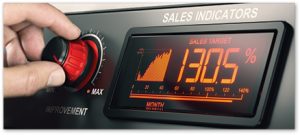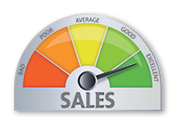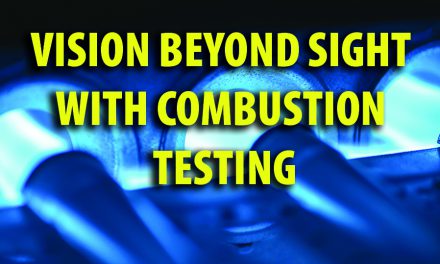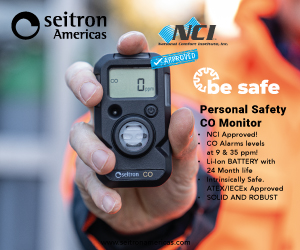NCI’s well-known tagline, If You Don’t Measure, You’re Just Guessing!? has received the attention it deserves, serving to both instruct and demand a higher level of professionalism on the technical
side of the HVAC Industry. The art and science of measuring also applies to your comfort advisors’ sales performance. Here’s How.

Tom Piscitelli
Have you ever thought about ‘measurement?’ I can’t think of anything that isn’t measured. How often do we ask ourselves questions that begin with, ‘how many,’ ‘how much,’ ‘how long,’ or ‘how far?’ Measuring is natural and it’s done for some very good reasons. Let’s look at measuring as it applies to sales performance and what the benefits could be to you and your company.
Why Measure Sales Performance?
Everything and every person in your company has a purpose that ultimately should produce a profit. There are optimal ways to perform every task and your day is consumed with correcting things that aren’t going in the right direction.

What indicators help you measure the sales performance of your High-Performance HVAC company?
As long as sales are coming in you don’t worry about the number of leads, or their cost, or the job selling price. Among other things, your immediate focus is on ordering materials, staging the job, getting it installed, and collecting the money.
Wait! Your purpose is to make a profit, right? Doesn’t the cost of the lead, the sales close rate, average job selling price, number of estimated labor hours, material costs, and other factors contribute to the amount of profit you produce? And won’t improving all of these have a positive impact on your bottom line?
Absolutely.
So, measuring these sales-related variables will help you determine where you are doing well and where you are not, so you can take the necessary steps to maximize profitability.
What to Measure?
Here are seven key measurements that are essential: each is compared to its goal or target. Also, each measurement delivers a management message worth listening to.
Annual sales: $1,500,000 for a full-time comfort advisor. Annual sales should be broken down to monthly and weekly targets, based on historical data
First call close rate: 15-25% is what you should expect, depending on selling skills, lead sources, and customer urgency
 Follow-up close rate: Should be between 20-30%. This depends on how well the agreement was between the salesperson and customer for follow up, how effectively your salesperson adapted to the customer’s buying style, and how appropriately persistent the salesperson was
Follow-up close rate: Should be between 20-30%. This depends on how well the agreement was between the salesperson and customer for follow up, how effectively your salesperson adapted to the customer’s buying style, and how appropriately persistent the salesperson was
Average job selling price: This depends on your market area, but on average you should expect between $12-15,000 for a complete system replacement, including ductwork upgrades. Replacing the entire duct system can add even more — between $6-8,000
Revenue per lead: $5-6,000 depending on the average job selling price and close rate
Gross profit margin: 55% is required to pay a sales commission, cover marketing, other overhead expenses, and produce a 10-15% net profit
Gross profit per man-day: $2,000 or more. Determine the monthly overhead cost plus desired monthly net profit. Then divide that by the total net man-days of labor available to create the target. The secret to success is in selling the value of higher-end solutions, not just tight labor and materials cost management.
Click below for next page













Recent Comments